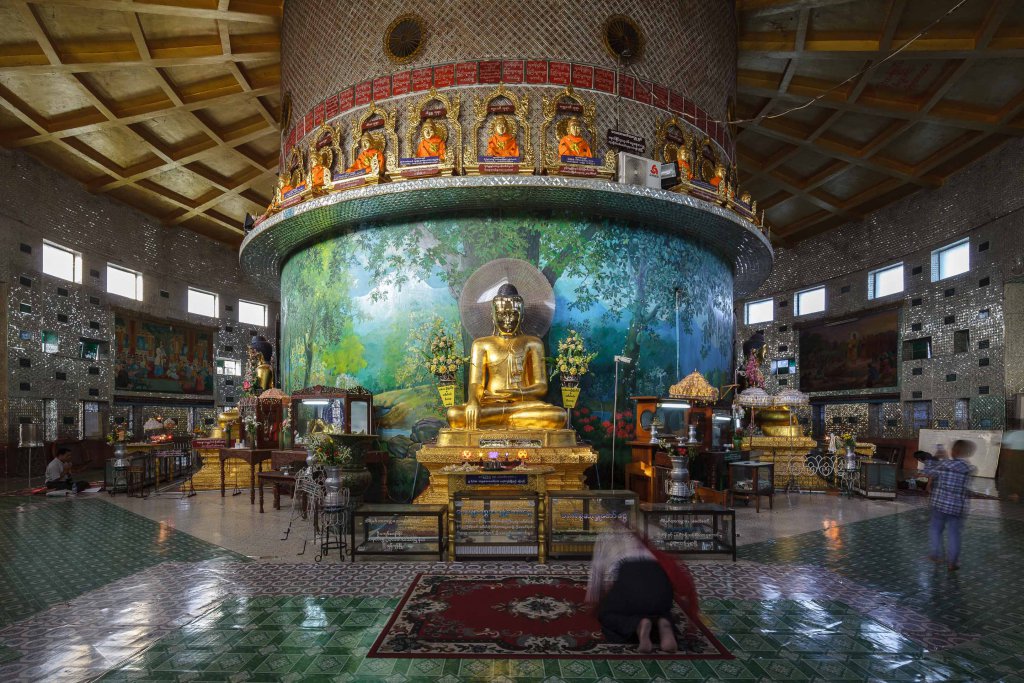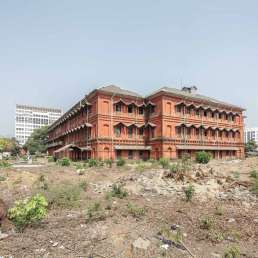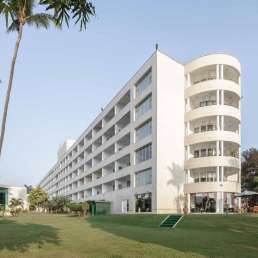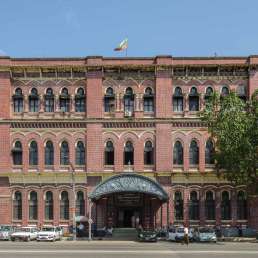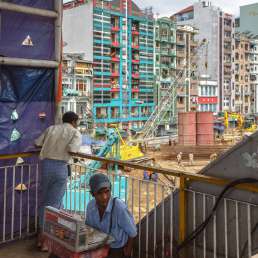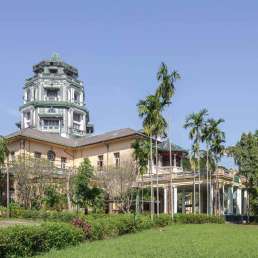Otherwise: World Peace Pagoda
Address: Kaba Aye Pagoda Road
Year built: 1952
Architect: Unknown
Of the buildings within the complex, the pagoda remains the most used today. Best begin your exploration here, as taxi drivers will have no problem finding it. Just like at the Shwedagon Pagoda, it is advisable to keep your shoes in a plastic bag and inside a backpack before entering the pagoda, as you will likely exit from another side if you venture elsewhere within the complex.
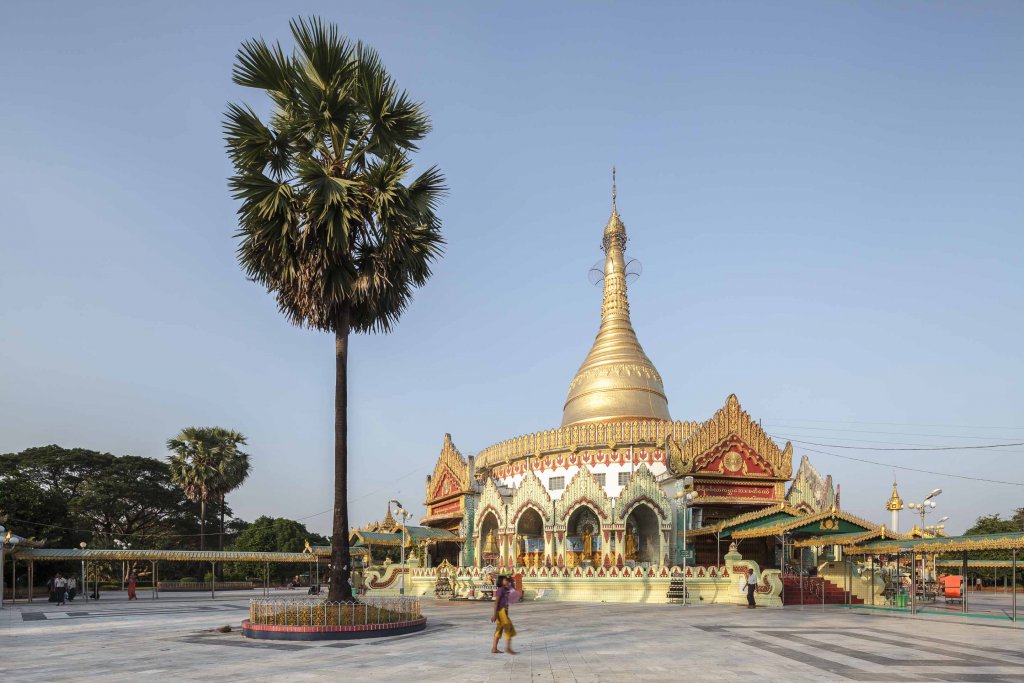
When built in 1952, the Kaba Aye stupa was a complete break from the past: worshippers were able to enter the hollow pagoda. Usually stupas were solid, with the relics buried underneath them, just like at the Shwedagon Pagoda. The Kaba Aye Pagoda’s innovation was made possible by modern construction techniques and supporting steel structures. The principle was later replicated at the Botataung Pagoda and the Maha Wizaya Pagoda. Even the Shwedagon Pagoda’s duplicate in Naypyidaw, the Uppatasanti Pagoda, is hollow. At the Kaba Aye Pagoda, the relics inside an inner chamber consist of the remains of two of the Buddha’s disciples. Before being brought to Burma, they lay in London’s Victoria and Albert Museum. The Kaba Aye Pagoda’s dimensions are rather modest: it is 34 metres high and has about the same diameter. Leave the pagoda towards the north to reach the Maha Pasana Guha.
